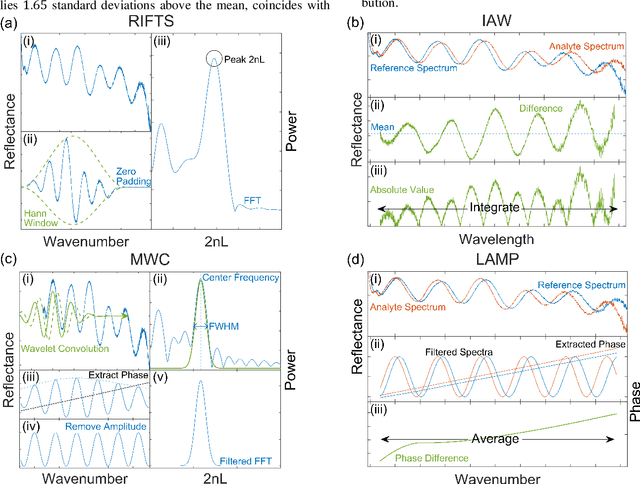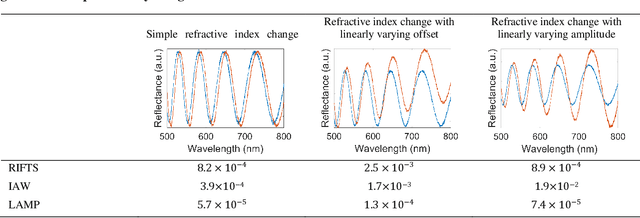Signal Processing Techniques to Reduce the Limit of Detection for Thin Film Biosensors
Paper and Code
Mar 12, 2021



The ultimate detection limit of optical biosensors is often limited by various noise sources, including those introduced by the optical measurement setup. While sophisticated modifications to instrumentation may reduce noise, a simpler approach that can benefit all sensor platforms is the application of signal processing to minimize the deleterious effects of noise. In this work, we show that applying complex Morlet wavelet convolution to Fabry-P\'erot interference fringes characteristic of thin film reflectometric biosensors effectively filters out white noise and low frequency reflectance variations. Subsequent calculation of an average difference in phase between the filtered analyte and reference signals enables a significant reduction in the limit of detection (LOD) enabling closer competition with current state-of-the-art techniques. This method is applied on experimental data sets of thin film porous silicon sensors (PSi) in buffered solution and complex media obtained from two different laboratories. The demonstrated improvement in LOD achieved using wavelet convolution and average phase difference paves the way for PSi optical biosensors to operate with clinically relevant detection limits for medical diagnostics, environmental monitoring, and food safety.
 Add to Chrome
Add to Chrome Add to Firefox
Add to Firefox Add to Edge
Add to Edge